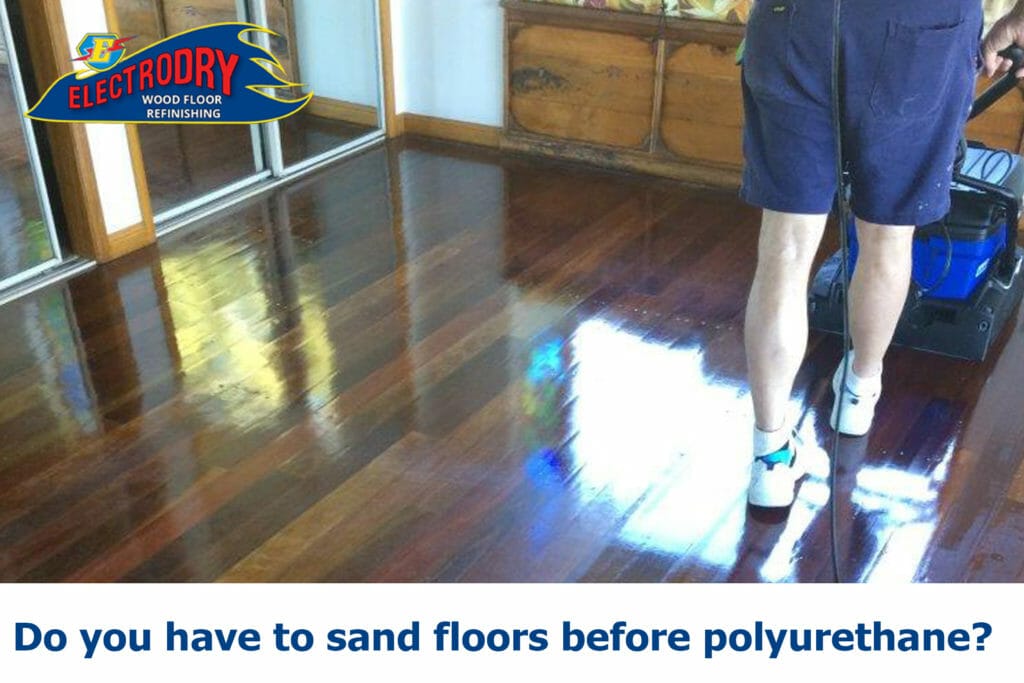Buffing the polyurethane smooths it out and roughs it up a little, allowing the following layer of polyurethane to adhere easier. Brush strokes, bubbles, and rough patches are also eliminated (or at least camouflaged) by buffing. Because water based polyurethane is thinner, this is very significant.
Because it is less forgiving, water based polyurethane is more difficult to apply, especially for do-it-yourselfers, handymen, and inexperienced refinishers. It’s even more necessary to engage a specialist if you’re going to utilize water-based poly. Visit Geelong’s leading Floor Sanding today!

If you are using water-based polyurethane
- Steel wool should not be used to sand the floor.
- Paint thinner should not be used to tack the floor.
- A specific water-based polyurethane applicator is required.
Use a synthetic paint pad instead of a lamb’s wool applicator if you’re using oil-based polyurethane and want a very thin application. Although air movement will speed up the drying process, it is preferable to limit airflow to keep debris, dust, bugs, and carpet fibers out of the new finish.
How Do You Make Old Hardwood Floors Look New?
Water stains, scratches, dullness, and entire areas worn bare by foot traffic are all signs that the floor should be refinished. Previously, this meant sanding down to bare wood, which is a dusty, time-consuming process that may be dangerous if done incorrectly or costly if done by a professional. While some floors necessitate this level of care, many more can benefit from screening.
How Do You Recoat and Screen a Wood Floor?
Clog-resistant sanding disks are known as screens. A 16-inch floor polisher, which functions like a huge oscillating sander, is used for screening. It won’t take off on you like a drum sander and doesn’t require much strength to operate. The screen is held in place by the weight of the floor polisher and a synthetic-wool pad.
Screening removes the floor finish without cutting into the wood itself, so you should:
- Only use a polyurethane finish on the floor, which is a non-penetrating plastic coating that lies on top of it.
- When the finish is old, scratched, or dull but the wood beneath it is not stained or damaged, screen it.
How much Does Screening Cost?
Renting one for a day costs roughly $25 if you want to do it yourself. This unit’s 60- to 120-grit disks range in price from $6 to $10 per. Hire a professional floor refinisher if you don’t have time to perform the work yourself or don’t want to be around that much dust. Depending on how much screening is required and whether the floor requires one or two coats of finish, this will cost between 90 cents and $1.50 per square foot.
Before adding a screening disk to the machine, use grit sandpaper to remove the harsh burrs. When the polisher first starts, this stops the disk from cutting too deeply into the finish.
Before You Start Screening
- Remove anything you can from the space, especially dust-gathering things like furniture, carpets, and paintings.
- All doorways should be sealed with plastic sheeting and masking tape, as well as duct registers and cabinet doors.
- If the weather permits, open the windows and set a fan in one of them to remove dust. Wear a respirator whether you’re using a fan or not.
- Remove the quarter-round or base-shoe molding along the baseboard for the time being, and countersink any protruding flooring nails.
Can polyurethane floors be recoated?
Yes, extra coats of polyurethane can be added to a polyurethane-finished hardwood floor.
How Do You Apply Water-Based Polyurethane To Hardwood Floors?
When working with water-based polyurethane, use a synthetic bristle brush instead of a natural bristle brush in the corners of the room. You can use a roller or trim pads in the room’s middle. However, make sure it’s a synthetic pad, as this will not retain the polyurethane, making application easier.
What is the Best Finish for Hardwood Floors?
The most common floor finish is polyurethane. It’s robust enough to withstand regular traffic and is practically impervious to damage. There are two types of polyurethane finishes: solvent-borne (oil-based) and water-based (water-based) (waterborne). Each form has advantages, and neither is a bad option.
What Is Screening Hardwood Floors?
Screening is a method of removing the top layer of polyurethane without removing any wood. This low-cost method allows you to handle the work yourself with little risk, and it eliminates the cleaning and inconvenience involved with floor sanding.
If you have further questions or require assistance with your hardwood floors, you can contact us at floor sanding and polishing in Sunshine Coast.

